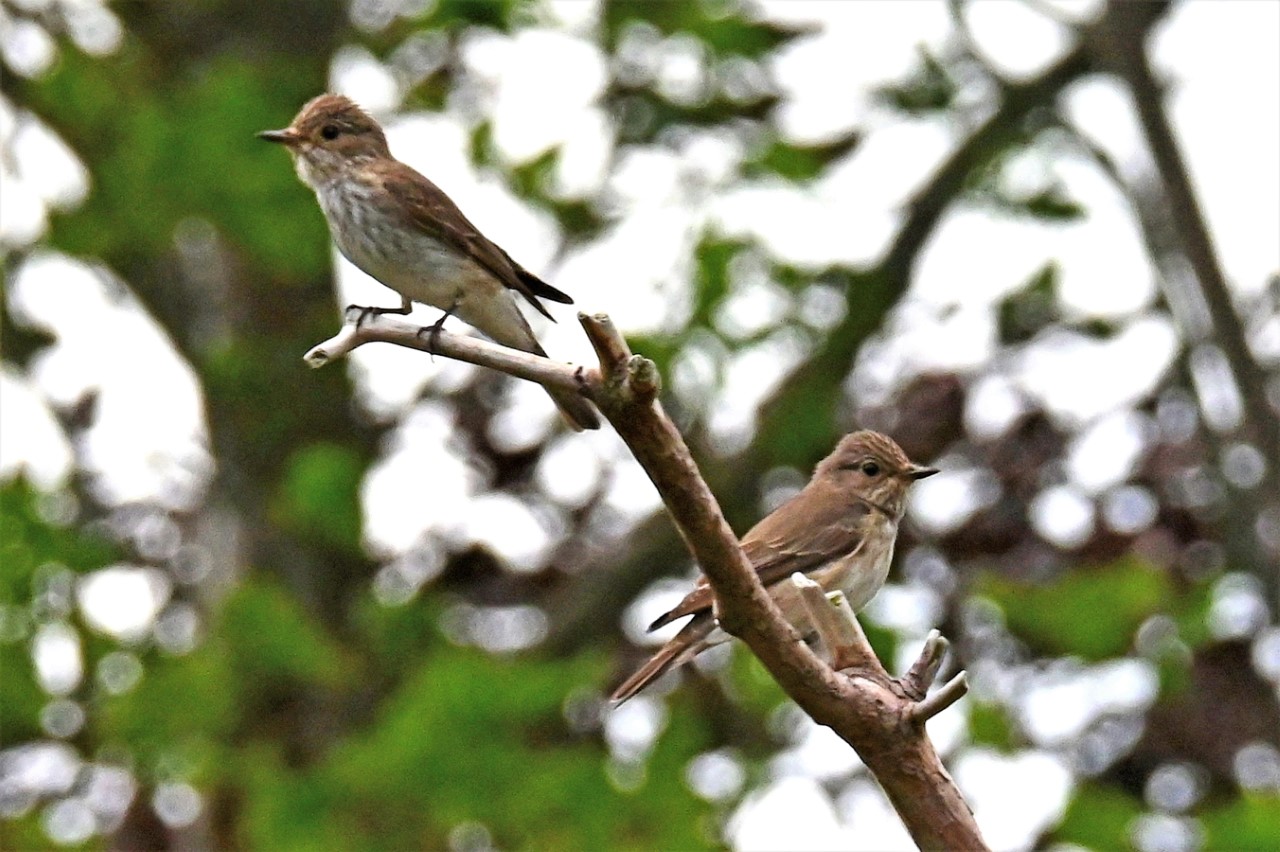North East ornithologist, Phil Hanmer, shares a new update summarising bird ringing across Northumberland throughout July.

Barn Owl © Phil Hanmer
Returning to the small bird box projects that we monitor year-on-year I can report that a wood at Doxford, which was very severely damaged by Storm Arwen, had only 27% occupancy of its boxes as compared to 50% last year. At Ingram 22% were occupied compared with 14% last year. At the Breamish Valley Caravan Site 37% of boxes were used and most were successful, producing lots of young Blue Tits and Great Tits. Back in 2021 53% of boxes were used but there was a big loss of chicks in poor weather and only 33% were successful. Back at home, after a week away we returned to find a Spotted Flycatcher nesting in a climbing Hydrangea right by our front door. It had hatching eggs by 25 June and by 4 July one of C Ringers was able to ring two fat healthy chicks. The adult pair watched proceedings from close by. Unfortunately, we also found that two other chicks had perished in some appalling cold rain. The two successful pulli were seen leaving the nest on the 9 July.

Spotted Flycatcher Chick © Phil Hanmer 
Spotted Flycatcher Adult Pair © Phil Hanmer
Turning to ringing at Howick we are looking out for the signs of dispersal and migration starting but that’s not what we are seeing at present. On 16 July we captured 39 birds including 36 new and three retraps. Only five were adult birds while 29 most definitely very juvenile, including a loud young Magpie, all of which probably hatched at Howick. Those quick at maths might ask, ‘’well what about the other five?” These were a couple of Tree Sparrows and Long Tailed Tits that are in fact very difficult, if not impossible, to age. This is because these juvenile birds moult all their Primary Flight feathers in their first year, just like their adults – rendering them of indeterminate age.
Ringing again on 22 July we had a large catch of 69 birds including 51 new and 18 retraps. The retraps included two Long Tailed Tits from October 2020, they looked rather like young birds, but were not; a Dunnock from August 2020, that did look its age and a female Blue Tit from July 2020. The latter was showing its age by being in something of a catastrophic Main Moult. The new birds included rather a lot of very young, low weight, Chiffchaffs, Blackcaps and Goldcrests as well as Robins and Tits. The few adult birds included a female Swallow, one of very few seen around, a pair of adult Song Thrush and a remarkably well behaved male Great Spotted Woodpecker. Woodpeckers usually do their best to injure the ringer with their strong beak.
Ringing on 23 July was much quieter with only 26 birds captured, including 19 new and 7 retraps. It was remarkable that every single new bird was a juvenile. These included a Bullfinch, which was not immediately identified because it was so young, Blackcap, Dunnock, Wren, Chaffinch, Goldcrest, Chiffchaff, Great Tit, Robin and a young Treecreeper. Treecreepers are beautiful with their chequerboard patterns of brown feathers but remarkable difficult to photograph successfully as their natural stance means they can’t sit up straight in the hand.
On 29 July we captured another 52 birds, with 35 new and 17 retraps. Included in the retraps were a Dunnock and a Blue Tit both first ringed in 2019. The new birds included a Goldfinch which, being juvenile, had no red and gold on its head and an adult Blackbird which if you saw it in your garden, you might think was sick. However, it was just moulting. There were also some juvenile Chiffchaffs and Blackcaps both not ready to migrate south just yet.

Juvenile Bullfinch © Phil Hanmer 
Treecreeper © Phil Hanmer